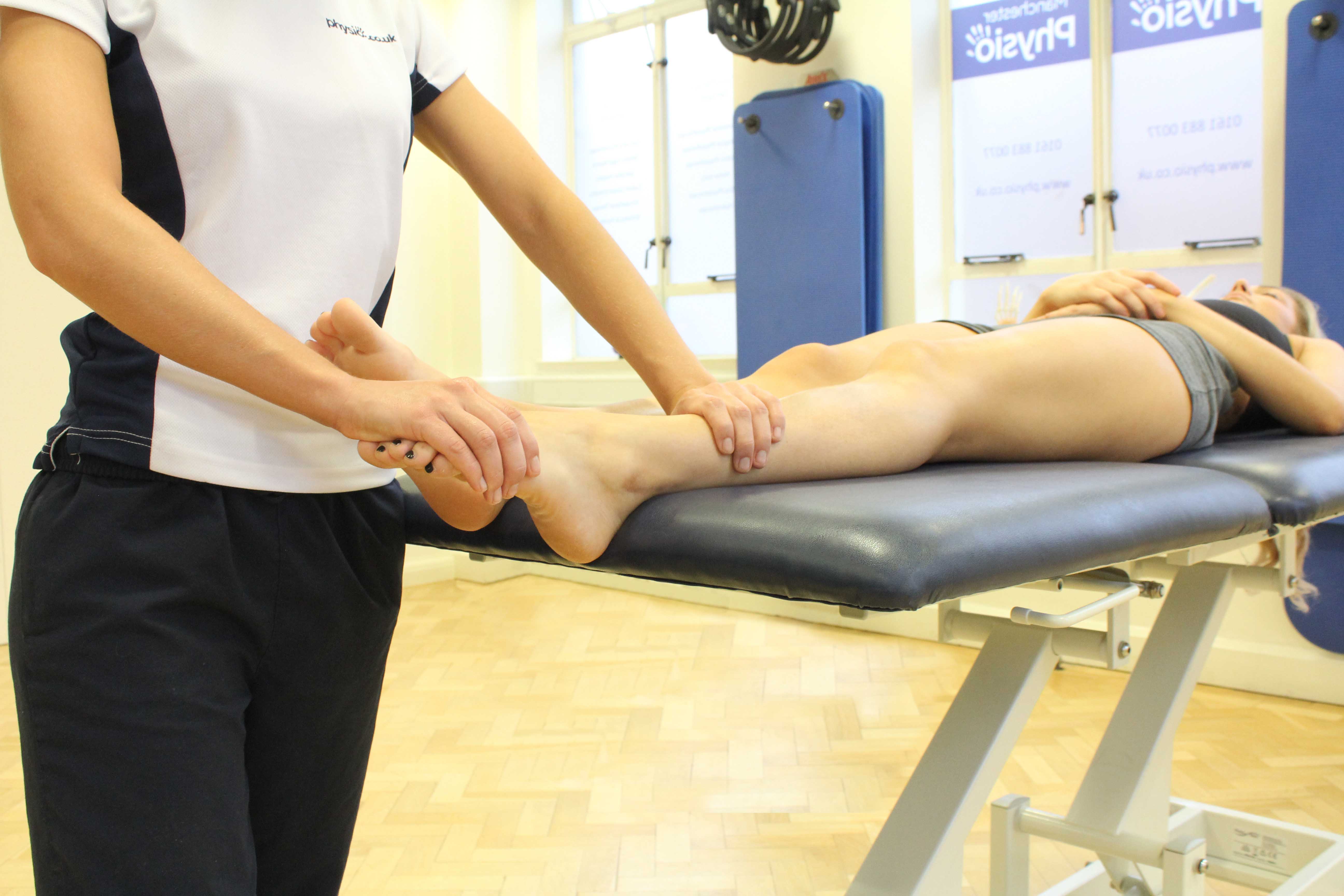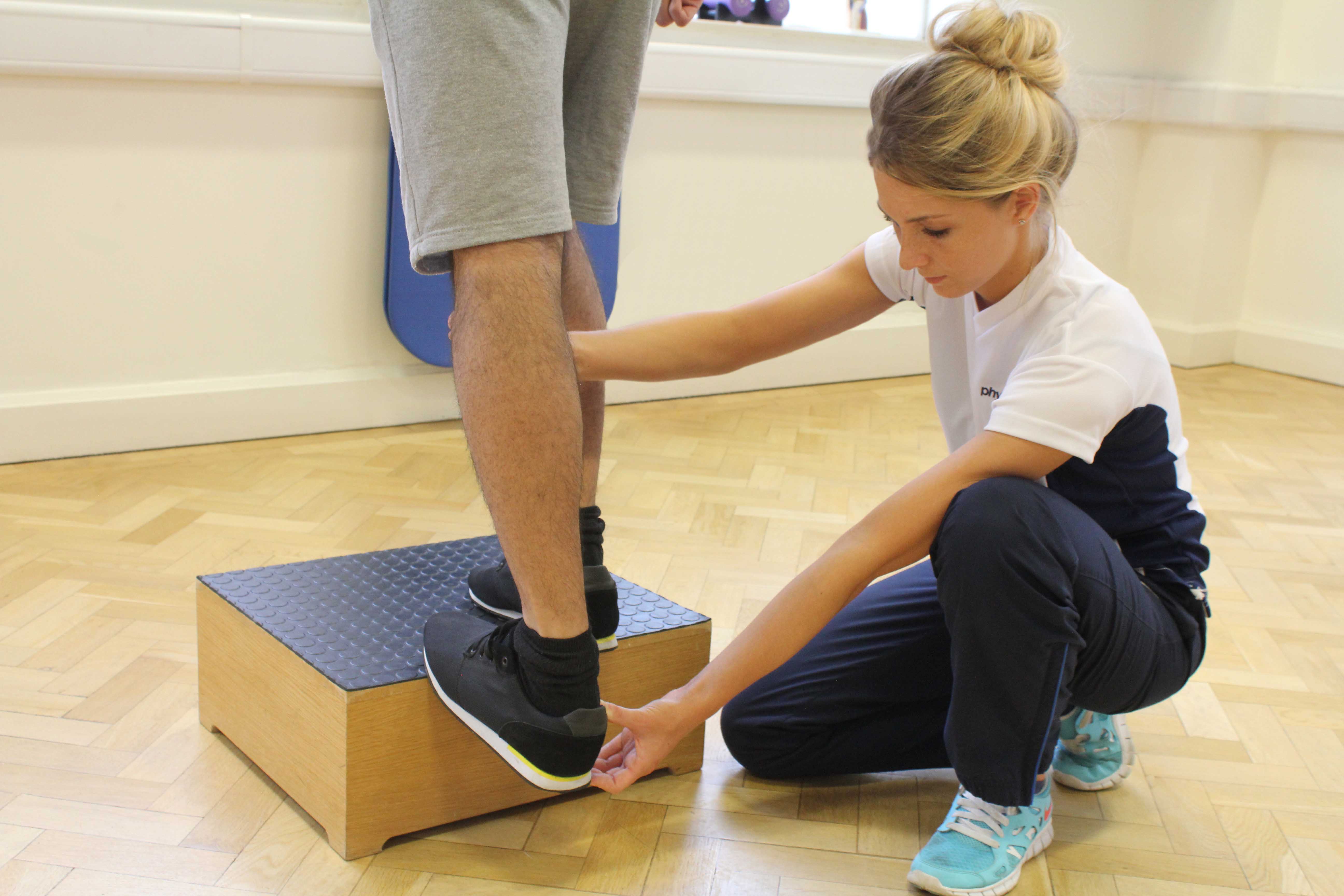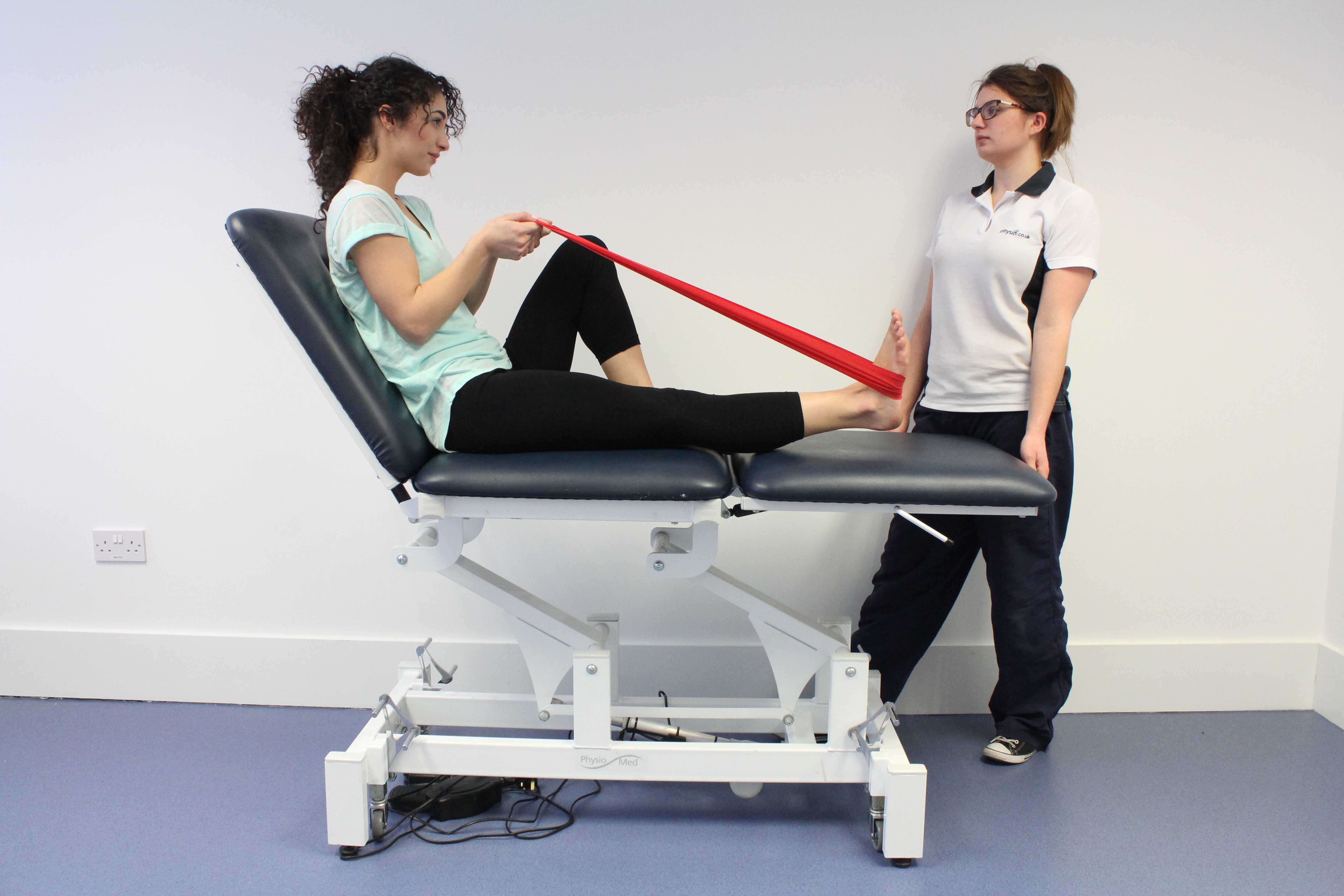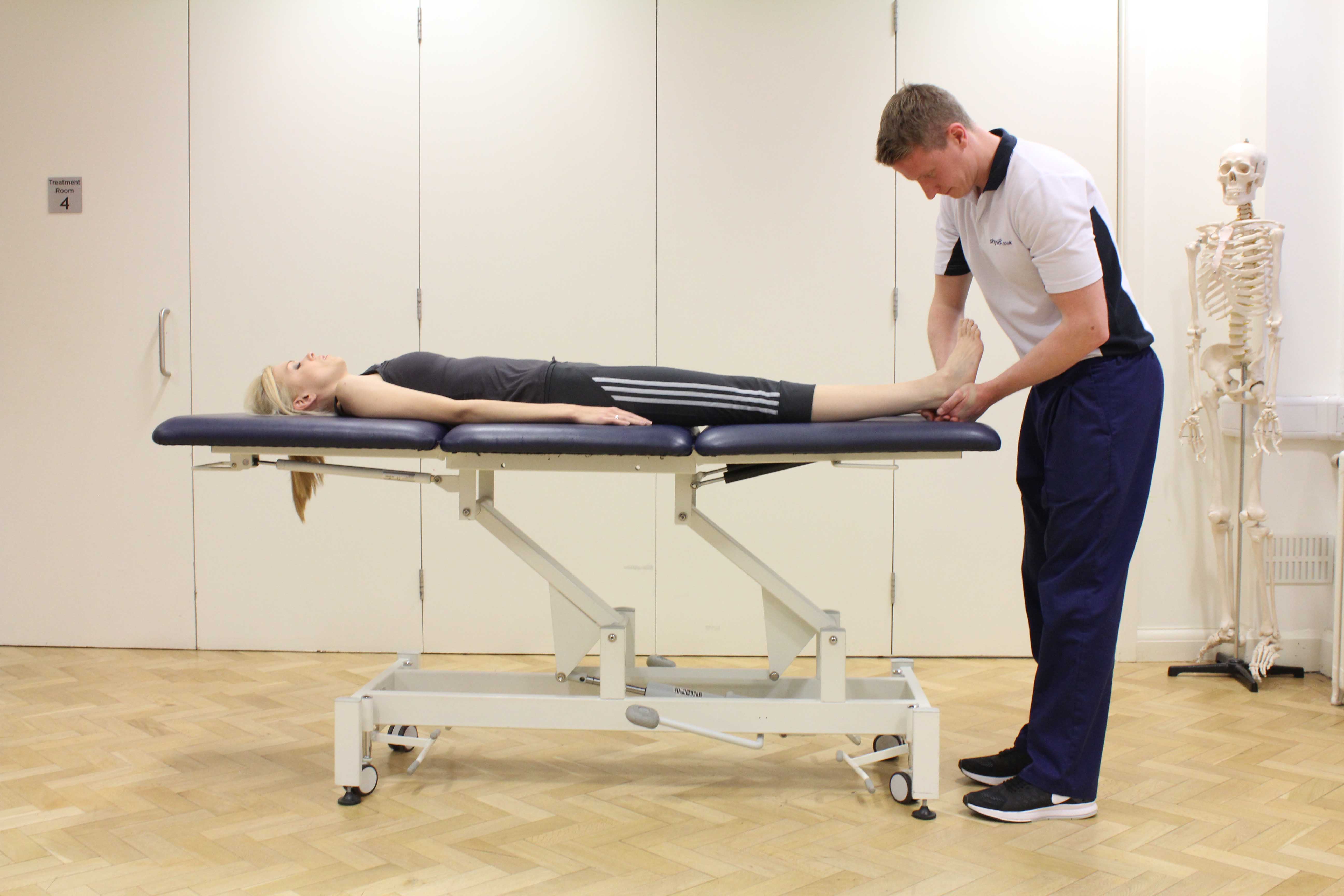Scarf Osteotomy surgery is used to treat bunions.
Bunions also known as Hallux Valgus are enlargements of the tissues or bone at the base of the big toe, causingmis-alignment of the big toe joint.
Indications for Scarf Osteotomy include painful joint range of movement, deformity of the joint complex, pain or difficulty with footwear, inhibition of activity or lifestyle, and associated foot disorders that can be caused by this condition.
 Above: Passive stretch of the connective tissues in the foot
Above: Passive stretch of the connective tissues in the footThe Scarf Osteotomy (also known as the Z osteotomy), involves a long incision (roughly 4cm) being made down the inner side of the foot next to the big toe from the mid-foot towards the toe. Horizontal cuts then made at either end of this incision:
- At the toe end -across the top of the foot
- At the end closest to the heel - towards the bottom of the foot.
The goals of surgical treatment are to relieve symptoms, restore function, and correct the deformity.
Physiotherapy is important following surgery to reduce pain, regain range of movement and develop a correct walking pattern.
 Above: Stretch and strengthening exercises supervised by MSK therapist
Above: Stretch and strengthening exercises supervised by MSK therapistSymptoms after surgery
Following surgery you should expect some pain and swelling around the scar site. This can be managed with pain relief medication and ice therapy (Cryotherapy).
Physiotherapy after surgery
Physiotherapy following surgery will depend on a number of factors including age, weight, bone density and surgical success. At Physio.co.uk our programme will be determined by the post-operative notes provided by your orthopaedic surgeon
It may be that you are able to walk immediately following surgery with a surgical boot and crutches for protection for the first 3-4 weeks. If this is the case then we encourage you develop a balance between getting up and moving (this will help maintain strength, balance, stamina and range of movement in the body as a whole), and resting with your affected foot elevated with ice (this will keep swelling to a minimum and pain at bay)
 Above: Strengthening exercises for the foot and ankle using a resistance band
Above: Strengthening exercises for the foot and ankle using a resistance bandIn some cases (such as if you are elderly or have reduced bone density), you will be advised to keep all weight off the affected foot until healing has occurred (6-8weeks). Should this be the case, our involvement will not be delayed in accordance – our physiotherapists will concentrate maintaining the range of movement and strength at the other joints of the leg (hip, knee and ankle). Our physiotherapists will be able to create a seated exercise plan to ensure you remain strong enough to get up and walk when the surgeon allows. Our physiotherapists will also be able to advise gentle range of movement exercises you can be doing to aid recovery of your injured foot and also be able to guide you how to reduce pain using techniques such as ice therapy (Cryotherapy).
Following clearance from the surgeon and removal of the surgical boot, you will be able to wear wide toed shoes as tolerated. It is at this time our physiotherapists will introduce more intense range of movement exercises for the affected foot, they will also be able to teach you ways to help with your balance and guide you through a correct walking technique. Our physiotherapists will also be able to help you in achieving your more personal goals whatever these may be.
 Above: mobilisations and stretches of the foot and ankle
Above: mobilisations and stretches of the foot and ankleSummary
A Scarf osteotomy can be used to repair hallux valgus (bunion). The procedure involves creating a z-shaped incision on the inner (big toe) side of the foot through which the bone is repositioned and fixed with screws or pins into the corrected position. Recovery following a Scarf osteotomy can take anywhere between 3 and 12 weeks depending on a number of factors. It is the orthopaedic surgeon that will make the decision whether you can walk immediately or if you must wait until healing has occurred. Physio.co.uk will be able to create a tailored treatment program soon after your operation based on your operation and your personal goals.
Call Physio.co.uk now on 0330 088 7800 for more information or to book an appointment please contact us.

 0330 088 7800
0330 088 7800





































